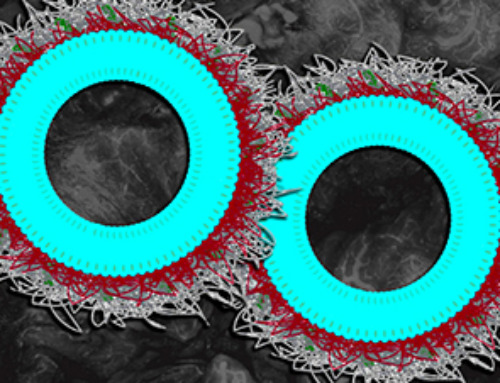Microcontaminants place a considerable burden on our water courses, but removing them from wastewater requires considerable technical resources. Now, ETH researchers have developed an approach that allows the efficient removal of these problematic substances.
In our everyday lives, we all use a multitude of chemical substances, including cosmetics, medications, contraceptive pills, plant fertilisers and detergents—all of which help to make our lives easier. However, the use of such products has an adverse effect on the environment, because many of them cannot be fully removed from wastewater at today’s water treatment plants. As micropollutants, they ultimately end up in the environment, where they place a burden on fauna and flora in our water courses.
As part of a revision of the Waters Protection Act, parliament therefore decided in 2014 to fit an additional purification stage to selected water treatment plants by 2040 with a view to removing microcontaminants. Although the funding for this has in principle been secured, the project presents a challenge for plant operators because it is only possible to remove the critical substances using complex procedures, which are typically based on ozone, activated carbon or light.
Image Credit: phys.org
News This Week
GLP-1 Drugs Like Ozempic Work, but New Research Reveals a Major Catch
Three new Cochrane reviews find evidence that GLP-1 drugs lead to clinically meaningful weight loss, though industry-funded studies raise concerns. Three new reviews from Cochrane have found that GLP-1 medications can lead to significant [...]
How a Palm-Sized Laser Could Change Medicine and Manufacturing
Researchers have developed an innovative and versatile system designed for a new generation of short-pulse lasers. Lasers that produce extremely short bursts of light are known for their remarkable precision, making them indispensable tools [...]
New nanoparticles stimulate the immune system to attack ovarian tumors
Cancer immunotherapy, which uses drugs that stimulate the body’s immune cells to attack tumors, is a promising approach to treating many types of cancer. However, it doesn’t work well for some tumors, including ovarian [...]
New Drug Kills Cancer 20,000x More Effectively With No Detectable Side Effects
By restructuring a common chemotherapy drug, scientists increased its potency by 20,000 times. In a significant step forward for cancer therapy, researchers at Northwestern University have redesigned the molecular structure of a well-known chemotherapy drug, greatly [...]
Lipid nanoparticles discovered that can deliver mRNA directly into heart muscle cells
Cardiovascular disease continues to be the leading cause of death worldwide. But advances in heart-failure therapeutics have stalled, largely due to the difficulty of delivering treatments at the cellular level. Now, a UC Berkeley-led [...]
The basic mechanisms of visual attention emerged over 500 million years ago, study suggests
The brain does not need its sophisticated cortex to interpret the visual world. A new study published in PLOS Biology demonstrates that a much older structure, the superior colliculus, contains the necessary circuitry to perform the [...]
AI Is Overheating. This New Technology Could Be the Fix
Engineers have developed a passive evaporative cooling membrane that dramatically improves heat removal for electronics and data centers Engineers at the University of California San Diego have created an innovative cooling system designed to greatly enhance [...]
New nanomedicine wipes out leukemia in animal study
In a promising advance for cancer treatment, Northwestern University scientists have re-engineered the molecular structure of a common chemotherapy drug, making it dramatically more soluble and effective and less toxic. In the new study, [...]














Leave A Comment